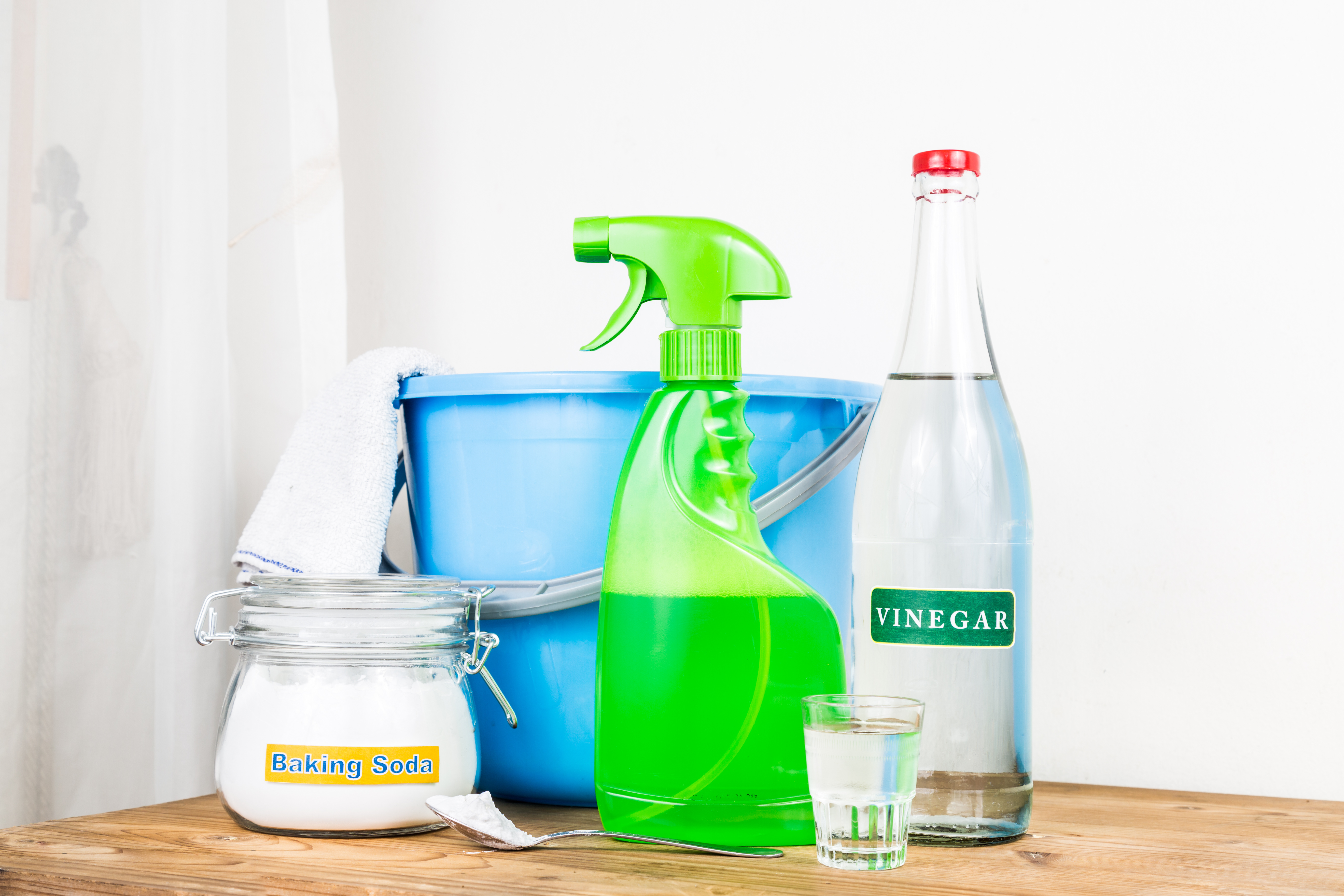If you care about the environment and want to make changes that make your lifestyle more environmentally friendly, a good place to start is with your household cleaning products. Switching to green cleaning methods doesn’t have to be costly. There are plenty of substitutions you can make that are kind to your pocket and won’t harm the earth.
Natural Substitute for Harsh Cleaning Chemicals
When it comes to natural cleaning products, often the easiest thing to do is make your own. Here are a few simple suggestions.
All-purpose Cleaner: In a spray bottle add ½ cup of white vinegar with 4 drops of tea tree oil and 2 tablespoons of baking powder. Top up with water and shake to mix thoroughly. This is a very efficient cleaner. The white vinegar is great for dissolving grease and grime, and removing stains. The tea tree oil kills pathogenic bacteria that can cause illness and the baking soda is a deodorizer that also has antibacterial properties.
Dishwasher Detergent: It’s easy to make your own environmentally friendly dishwashing detergent simply by combining 1 cup each of washing soda and borax, ½ cup of lemon juice and ½ cup of salt. Just one tablespoonful per load should do the job just as good as any store-bought detergent.
Glass Cleaner: Keep your windows, mirrors and glass table tops sparkling with this homemade cleaner. Combine four cups of water, add a tablespoon of starch, ½ cup of white vinegar, and ½ cup of rubbing alcohol. This will clean dirt and greasy fingerprints from glass and leave it shining and smear-free.
Natural Air Freshener: This is an easy way to make your house smell fresh and clean, just don’t let the pan boil dry. Fill a 2-quart pan with water and bring it to the boil. Add 2 sliced oranges, a tablespoon of cinnamon and a tablespoon of cloves. Alternatively, add 2 sliced lemons, 2 tablespoons of rosemary and four drops of vanilla.
Natural Laundry Detergent: This recipe is easy to make and very affordable. Finely grate a bar of Castile soap. Boil a 6-quart pan of water and add the soap and stir in 1 cup of washing soda and 1 cup of borax. Pour mixture into a 5-gallon bucket and top up with hot water. Add 30 drops of lavender oil for a fresh scent. Put the lid on and leave it overnight for the mixture to cool. It should set into a creamy liquid. You now have 5 gallons of natural laundry detergent.
Floor Cleaner: You can clean natural and laminate floors simply by adding a cup of white vinegar and 10-15 drops of your favorite essential oil to a bucket of hot water.
Mattress and Upholstery Freshener: Fill a cheese shaker with baking soda and add a few drops of tea tree oil. Shake over mattress or upholstery, leave for an hour then vacuum.
Furniture Polish: Sealed wood can be polished with a few drops of lavender oil and olive oil on a soft cloth.
Heavy-duty Cleaner: This mixture is great for cleaning a greasy stove top, soap scum, grout and kitchen sink stains. Simply mix a cup of baking soda with enough hydrogen peroxide to make a paste. Spread it on the stain then scrub it away with a brush or coarse sponge.
Toilet Cleaner: Find a spray bottle that has a streaming jet option and fill it with neat white vinegar. Stream it around the bowl and under the rim then scrub with a toilet brush. You can also add 10 drops of tea tree oil as a disinfectant.
Bathtub/Shower Cleaner: Sprinkle kosher salt over the surface of your tub or shower and rub over with a half grapefruit. It will remove soap scum and stains and leave your bathroom smelling fresh.
Shower Head Cleaner: Fill a plastic bag with enough white vinegar to cover the shower head. Tie around the shower head and allow to soak for 15 minutes.
Stain Removal: Store bought stain removers contain very harsh chemicals. A mixture of 50/50 Hydrogen peroxide and water will remove stains like sweat, grass, food, and urine. Grease stains can be removed with chalk powder or baking soda then soaked in undiluted white vinegar for 15 minutes.
To start using these eco-friendly ideas around your home, remember to stock up on the natural ingredients so you always have them at hand. You will need, spray bottles, kosher salt, lemons, white vinegar, hydrogen peroxide, baking soda, tea tree oil, cinnamon, lavender oil, castile soap, washing soda, and borax. The initial cost of having these items at hand may seem steep, but by switching to homemade solutions instead of commercial ones, the money you will save in the end will surprise you, and the planet will thank you!
Charlotte Hurst is slowly but surely banishing harsh chemicals from her home 1 bottle at a time. Due to some health problems and seeking to lead as green a life as possible Charlotte is keen to let others know about her mission too.
